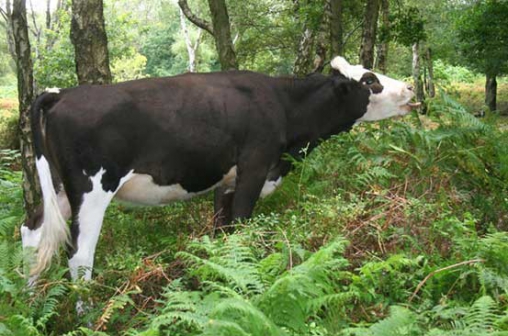
Last month, I visited my mother-in-law Aureriah Mndaka in Marima village, Tharaka Nithi County.
Like most parts of the country Marima has had its fair share of the ongoing drought and accompanying scarcity of pastures for livestock, pushing farmers to desperate measures.
I had observed with a lot of concern the presence of bracken fern weed on the road sides and below live fences. Bracken fern is a common weed worldwide that is poisonous to ruminants and non-ruminants.
I had shared this information with my mother-in-law but I wasn’t sure other farmers in the area knew of the dangers that weed posed.
Although I had met madam Flora previously; I hadn’t shared my concerns about the poisonous weed; partly due to the fact that I didn’t know in the first place if she was a dairy farmer. But it seems my mother-in-law had already shared with her that I was a vet.
News that I was around quickly reached madam Flora. When she saw me after exchanging pleasantries, she went straight to the point. “Daktari please help me. My cow is urinating red urine; the cow is neither pregnant nor isn’t on heat, is this normal ....the calf is urinating blood, I have never seen this....” she told me in panic.
What came to mind was bracken fern poisoning — which is characterised by bloody urine due to a disease called enzootic heamaturia.
To confirm my fears; I asked madam Flora how she was feeding her animals.
She confirmed that indeed feeding her livestock during the drought period had proved a challenge and many a times she tethered her animals at the edges of the streams where there was a little green grass or harvested the drying grass for them from the roadside.
Udder had red spots
I searched for a bracken fern plant and showed her; she quickly recognised the plant and confessed that she might have mixed it when cutting the drying grass for her livestock.
This initial conversation had already moved me close to what might have been the cause of the bloody urine but I still needed to see the animal to corroborate this information.
On examining the animals they all had elevated body temperatures, the calf had pale mucus membranes and appeared weak and emaciated.
The cow had red eyes and its udder had red spots. From clinical signs this was a case of enzootic heamaturia – a disease of ruminants and non-ruminants caused by ingestion of fresh or dried bracken fern fronts or stems. Bracken fern poisoning is common in cattle and more so during dry periods when pastures are scarce. Exposure to bracken fern occurs when it is mixed with hay or when animals are left to graze in areas that have high density of the plants.
Stay informed. Subscribe to our newsletter
Bracken fern has a poison that damages bone marrow and causes cancerous growths in the urinary tract. This is how anaemia and bloody urine are characteristic signs of enzootic heamaturia.
When these signs are observed the first thing is to immediately discontinue exposure of animals to the plant or contaminated feeds. Your vet will in addition administer broad spectrum antibiotics to take care of any secondary opportunistic diseases. Chronic form (long standing case) of this disease is fatal and will ultimately cause death in 90 per cent of cases. Feeding history is critical in the clinical diagnosis of this disease. In the long-term, farmers should work towards eradication of bracken fern through cutting or use of herbicides.
(The writer is a veterinary surgeon working with the Kenya Tsetse and Trypanosomiasis Eradication Council –KENTTEC)
 The Standard Group Plc is a
multi-media organization with investments in media platforms spanning newspaper
print operations, television, radio broadcasting, digital and online services. The
Standard Group is recognized as a leading multi-media house in Kenya with a key
influence in matters of national and international interest.
The Standard Group Plc is a
multi-media organization with investments in media platforms spanning newspaper
print operations, television, radio broadcasting, digital and online services. The
Standard Group is recognized as a leading multi-media house in Kenya with a key
influence in matters of national and international interest.
 The Standard Group Plc is a
multi-media organization with investments in media platforms spanning newspaper
print operations, television, radio broadcasting, digital and online services. The
Standard Group is recognized as a leading multi-media house in Kenya with a key
influence in matters of national and international interest.
The Standard Group Plc is a
multi-media organization with investments in media platforms spanning newspaper
print operations, television, radio broadcasting, digital and online services. The
Standard Group is recognized as a leading multi-media house in Kenya with a key
influence in matters of national and international interest.










